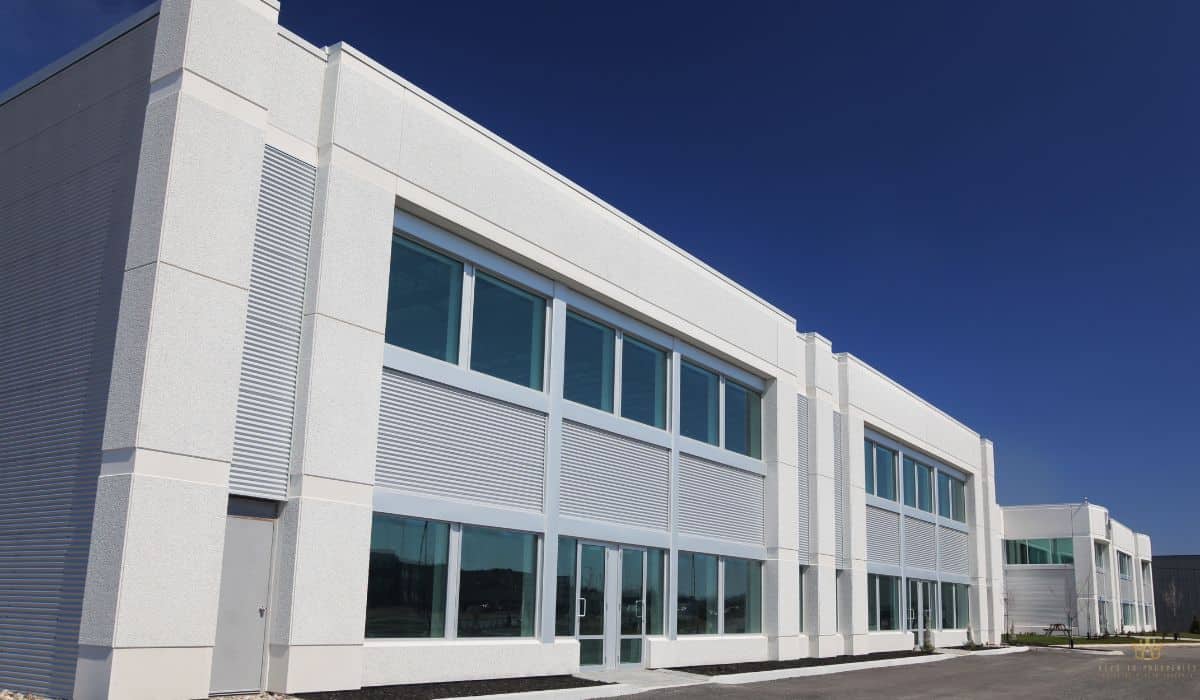Finding the optimal holding period for commercial properties is more than just playing the waiting game. It’s often about strategic timing that balances your immediate cash flow needs with long-term capital gains.
On average, investors across the U.S. hold commercial properties for somewhere between five and ten years, but that’s not a one-size-fits-all answer.
That window can be the sweet spot—or a costly mistake—depending on market conditions, asset type, and your specific investment goals.
From our experience, a miscalculated exit can lead to significant losses, while perfect timing transforms modest investments into remarkable successes.
This guide will help you identify exactly when to hold and when to fold based on your specific property type, market conditions, and investment goals in the 2025 landscape.
If you enjoyed our previous article on legacy planning in commercial real estate, you’ll find this guide equally valuable. We’ll connect these principles to key decisions about refinance vs. selling when your initial investment period approaches its end.
For a comprehensive overview, don’t miss our complete series on commercial real estate exit strategies that provides the full picture of maximizing returns.
Short Summary
- The optimal holding period for commercial properties depends on investment goals, market trends, risk tolerance, and property type.
- Office, retail, industrial, and multifamily properties each have different average holding times and income expectations.
- Factors like interest rates, lease length, market volatility, and tax implications can shift the right time to sell.
- A strategic plan with clear financial targets, regular monitoring of returns, and thoughtful exit timing is essential.
- Options like fractional ownership can add flexibility to your real estate strategy.
Understanding The Optimal Holding Period For Commercial Properties
To make smart investment decisions in commercial real estate, you’ve got to get a grip on the holding period. Below, we’ll unpack why this matters so much and how the right timing can seriously impact your bottom line.
What Is A Holding Period In CRE?
Your holding period is the time between purchasing and selling a property. Sounds simple, but that timeline can make or break your return. For instance, you can be an investor who plan for a 10-year hold, only to realize in year six that your market had peaked.
Adjusting the strategy early helped them avoid stagnating returns.
Holding Period Impacts Return And Exit Strategy
Longer holds often allow for asset appreciation, but there’s also the risk of market dips. A friend of ours ran an analysis: hold an office building for 7 years vs. 12.
In one model, selling at year 7 with strong tenant leases yielded a better IRR than holding longer and facing potential vacancy issues. Point is: exit strategies should stay flexible.
How Risk Tolerance Ties In
Risk tolerance shapes your timeline. Shorter holds can feel risky if you’re banking on fast appreciation. On the flip side, a 10+ year horizon might stress out investors who want quicker liquidity.
We usually ask: would you be okay sitting on this asset during a downturn? If not, a shorter holding period may be better.
Aligning Holding Period With Investment Objectives
You can’t wing this. If your goal is to reposition a property and sell, you’ll likely aim for 3–5 years. If you’re looking for steady cash flow, you might hold 10+ years. For example, one strategy we modeled centered on value-add retail—the investor targeted a 5-year repositioning, then sold once rents stabilized.
Market Trends In 2025 Shaping Timelines
So far, 2025 trends show investor interest in shorter holding periods, especially in sectors like industrial and small-bay flex. With interest rates fluctuating and cap rates under pressure, many are timing exits around debt maturity. Makes sense, right?
Short-Term Vs. Long-Term Gains
Keep this in mind: If you’re holding under a year, you’re taxed at ordinary income rates. Over a year and you get long-term capital gains treatment. That’s a game-changer. Many folks we’ve worked with tweak their sale timeline just to fall into that favorable tax bracket.
Bottom line: knowing the optimal holding period for commercial properties isn’t about luck. It’s about strategy, timing, and staying informed.
Key Factors That Determine Your Commercial Property Holding Period
In practice, there’s no universal timeline for holding a commercial property. The sweet spot depends on a handful of specific factors. Some you can control, and others you adapt to. Below, we’ll break down what really influences how long you should hang on to an asset.
Property Type Matters—A Lot
Different asset classes have different rhythms.
- Industrial properties often reach stabilization quickly, which could justify a 3–5 year hold.
- Multifamily buildings tend to appreciate steadily and may be better suited for long-term cash flow plays.
- Office properties? They usually need longer timelines due to higher tenant turnover and fit-out costs.
Let’s say you’re considering a small neighborhood retail strip. If tenants are stable and rent bumps are predictable, holding for 7–10 years might make the most sense.
Market Conditions and Volatility Change the Game
Markets can flip faster than you expect. If vacancy spikes in your area or cap rates start moving fast, your original timeline may need tweaking.
For example, we ran a scenario last year where an investor planned a 10-year hold. But rising market volatility and softening demand in their metro prompted a re-evaluation at year five. They sold ahead of schedule and avoided losses.
Staying flexible pays off!
Interest Rates and Cap Rates Can’t Be Ignored
When interest rates climb, your financing gets pricier, and cash flow might shrink. Meanwhile, cap rates affect your resale value.
If cap rates expand, your asset might lose value on paper even if income stays steady. So in high-rate environments, many investors look to exit sooner or refinance into better terms, depending on the asset’s cash flow.
Lease Periods Tie Directly Into Hold Strategy
- Long-term leases can offer stability, especially with credit tenants. These may support a longer holding period.
- Short-term leases (think 6–12 months) often signal a shorter window or a need to reposition the property.
If your tenants roll annually, you’ve got to think tactically. Maybe a 3–5 year hold gives you just enough time to boost NOI and sell.
Property Improvements And Value-Add Strategy
Executing a value-add strategy usually shortens your hold timeline. Once the upgrades are done and rents rise, you’ve added value.
Let’s say you improve curb appeal, re-tenant with stronger businesses, and modernize the HVAC. If done right, you may be ready to list in under 4 years.
Tax Implications Matter More Than You’d Think
Don’t forget the IRS. Holding over 12 months qualifies you for long-term capital gains rates, which can save you a ton.
Many folks structure their timing to hit that mark—even if it means holding a little longer. Also, planning ahead for a 1031 exchange could influence when you sell and what you do next.
Average Holding Period Across Different Commercial Real Estate Sectors
Every commercial property type plays by a slightly different set of rules when it comes to how long it’s typically held. Factors like rental income, appreciation potential, and tenant lease structure all play a part. Let’s break it down sector by sector.
Typical Holding Periods By Property Type
Holding periods vary depending on how each asset performs and what investors expect from it.
- Office properties often see an average hold of 7–10 years due to longer lease terms and slower repositioning potential.
- Retail centers fall in the 5–8 year range, especially with anchor tenants that sign longer leases but can also be sensitive to economic shifts.
- Industrial properties may be held for 3–7 years. These often stabilize quickly and can be flipped sooner if the location is strong.
- Multifamily buildings are typically held for 5–10 years. These offer steady income and opportunities for gradual rent increases.
In some markets, we’ve seen multifamily investors exit in just five years because rents spiked faster than expected, allowing them to hit their target returns early.
Capital Appreciation Expectations Differ
Industrial and multifamily properties tend to appreciate steadily, making them good candidates for shorter or medium-term holds.
On the other hand, office properties often require more patience. They’re more capital intensive upfront and dependent on the surrounding business ecosystem bouncing back after economic downturns.
Rental Income Stability And Vacancy Rates
Sectors with steady rental income—like multifamily and industrial—let investors be more flexible.
Retail and office assets, with higher vacancy rates and longer downtime between tenants, usually demand a longer optimal holding period for commercial properties just to recoup initial costs.
Lease Term Comparison
Shorter leases (common in multifamily and some retail) allow faster rent adjustments but can bring instability.
Long-term leases (standard in office and industrial) support cash flow predictability but may delay your ability to re-tenant at higher rents.
Depending on the strategy, both approaches can work. It’s all about aligning with your goals.
Market Demands and Location Play a Role
A well-located property in a growing metro may justify a shorter hold because appreciation moves faster.
But if you’re in a secondary market with slower rent growth, a longer-term plan may be smarter, even if the asset performs consistently.
At the end of the day, matching your property type to your hold strategy—and the market around it—is what leads to better outcomes.
Creating A Strategic Investment Plan For Your Commercial Property Portfolio
A solid investment plan is what separates reactive investors from those who build real wealth over time. Whether you’re eyeing your first commercial property or managing a growing portfolio, having an investment strategy in place can help you optimize holding periods, cash flow, and long-term appreciation.
Build A Business Plan With Clear Financial Goals
Start with a business plan that lays out specific financial targets—cash flow goals, appreciation expectations, and exit timelines.
- Set benchmarks for internal rate of return (IRR) and equity multiple.
- Define your ideal cash return at 3, 5, and 10-year intervals.
- Outline how you’ll handle refinancing, capital expenditures, and value-adds.
In one example, an investor mapped out a 7-year plan to renovate and refinance a small retail strip. By year five, the IRR exceeded expectations, giving them the flexibility to sell early.
Diversify Your Portfolio To Reduce Risk
Diversification helps balance risk across property types, lease terms, and regional markets.
If one asset lags due to economic shifts, another might outperform. For example, holding multifamily in a high-demand area alongside industrial in a logistics hub can allow for staggered sales and varied holding periods.
Conduct Thorough Due Diligence
Sure, due diligence is all about the building. But it’s also about market trends, tenant stability, and lease expiration dates.
Before locking in your timeline, ask:
- How soon do major leases expire?
- What are the projected operating expenses five years from now?
- Is this market expected to grow or stall?
Monitor IRR And Equity Multiple Over Time
Don’t wait until year seven to check your performance.
Set quarterly reviews of your equity growth and annual reviews of your IRR. If your equity multiple is trending higher than expected, you might exit sooner for a stronger return.
Define Cash Return Expectations Based On Timeline
- In shorter holds (1–3 years), focus on quick value-adds or lease-ups.
- Mid-range (4–7 years) often targets a balance between cash flow and capital appreciation.
- Long-term (8–10+ years) is best for stabilized assets with predictable income.
Each timeline has different risks and rewards. Match your plan to your risk tolerance and liquidity needs.
Explore Exit Strategies For Maximum Appreciation
Timing matters. Plan to sell during peak demand seasons or when cap rates compress.
If you’re holding a commercial property near new transit development, for instance, you might stretch your hold a year longer to capture that added value.
Consider Flexible Options Like Fractional Ownership
Fractional ownership gives investors a share of a large property without needing to buy the whole thing.
This can be a smart move if you want:
- Lower capital entry
- Flexible exit options
- Exposure to premium markets
Some platforms even allow partial exits based on your hold strategy, offering more liquidity than traditional real estate.
The key is staying proactive. A well-thought-out investment plan helps you decide when to hold, when to exit, and how to grow with confidence.
Final Thoughts
Figuring out how long to hold a commercial property isn’t one-size-fits-all. Your goals, the market, and the property itself all play a part. What matters most is having a clear plan, staying flexible, and making smart calls based on real numbers—not guesswork.
Want more tips and expert insights? Head over to our homepage and let’s keep building your real estate game together.
Frequently Asked Questions
What Is A Holding Period In Commercial Real Estate?
It’s the amount of time an investor holds a commercial property before selling it. This timeframe directly affects cash flow, tax liabilities, and the investment’s total return.
How Do I Know When To Sell A Commercial Property?
You’ll want to consider your original goals, how much equity has built up, current market conditions, and future projections. Many investors sell once they’ve hit their target internal rate of return or when value appreciation slows down.
Does Property Type Really Affect Holding Period?
Absolutely. Industrial spaces and multifamily units often have longer average holding periods due to stable rental income, while retail and office properties might shift faster with market demand and lease turnovers.
How Can I Reduce Risk When Setting A Holding Period?
Build in flexibility. Align your exit strategy with your cash flow needs and monitor metrics like equity multiple and local market data. A solid plan—and room to adjust—goes a long way.






